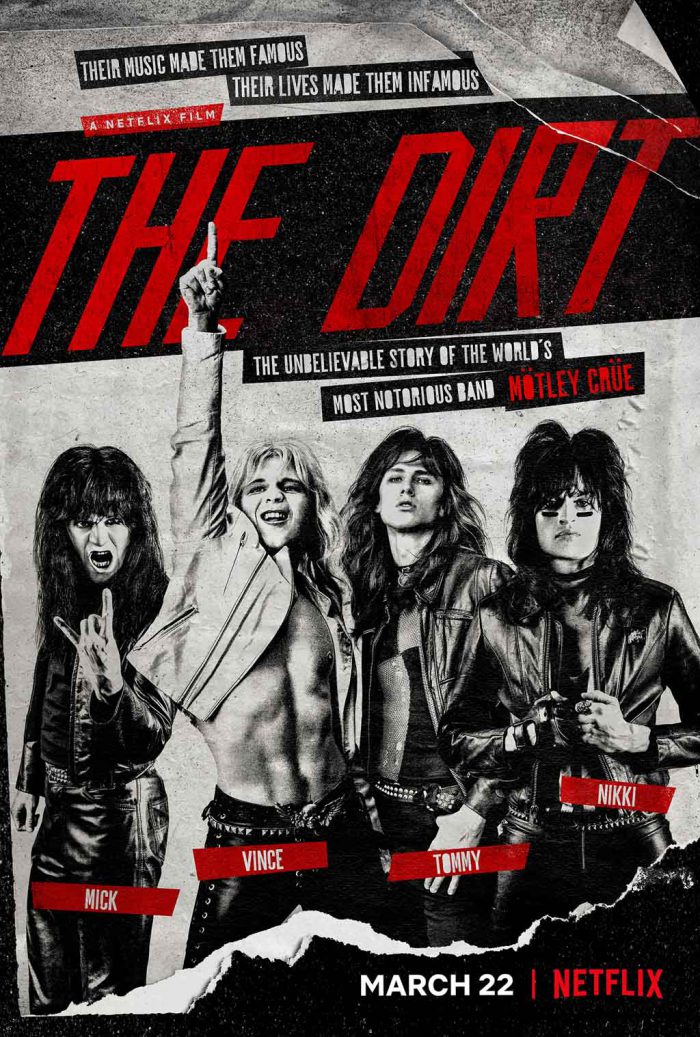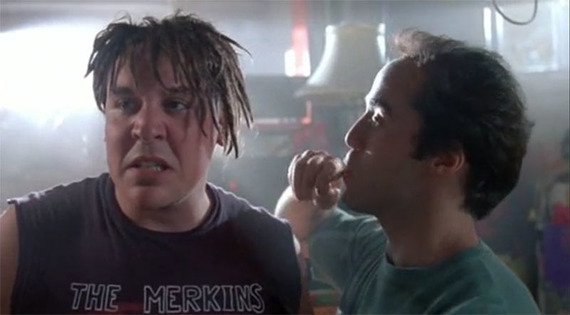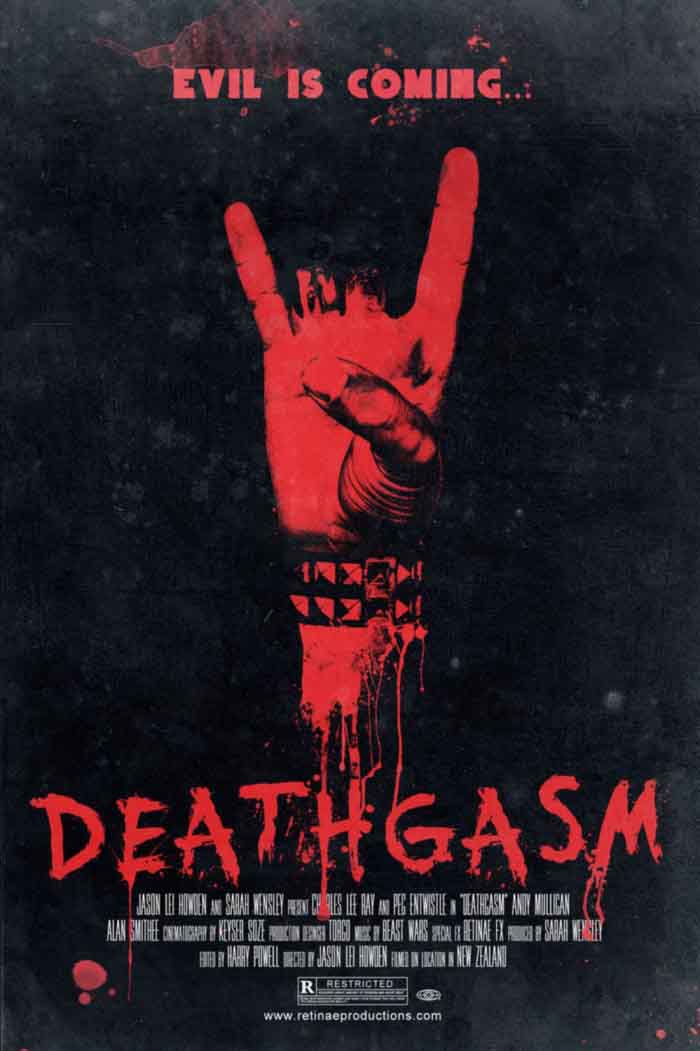film (original) (raw)
Who can dislike a movie about a Satanic cult that cruises around America, hunting down attractive women in order to kill them? Like all good horror films, Kristy addresses a subliminal fear, in this case of the capricious hatred of mobs of people united on the idea of resentment of those who have what they do not.
Netflix categories The Dirt as a “dark comedy,” but more accurately it belongs to the new genre of victimhood/confessional documentaries that this film studio likes to produce. Like I, Tonya, which was the first of this type of documentary witnessed by your author, it admits wrongdoing but pairs it with a sense of being wronged.
Tags: film, motley crue, movie, netflix, the dirt
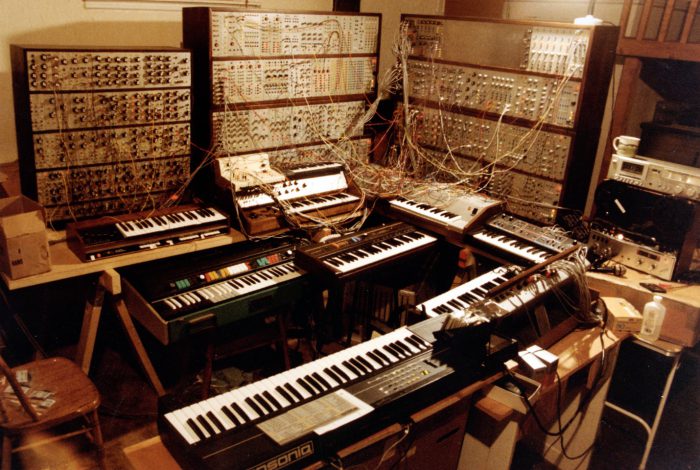
One genre which often attracts the admiration of Metal musicians is Electronica. When musicians from Germany, France and elsewhere began experimenting in the third quarter of the 20th century with various newfound technologies in order to create monumental landscapes of synthetic psychedelia with cosmic scope, the uncanny wave of influence unexpectedly resulted in the arising of everything from the modern club scene to many of your favourite Black Metal bands.
Tags: 1960s, 1970s, 1980s, Ambient, ash ra tempel, ashra, brian eno, canada, cinema, classical music, conrad schnitzler, Cosmic, drugs, edgar froese, electronic, electronic music, electronica, film, film score, france, futuristic, germany, greece, jean-michel jarre, keyboards, Klaus Schulze, kraftwerk, krautrock, manuel gottsching, michael hoeing, michael stearns, progressive rock, Romanticism, science fiction, sinoia caves, Soundtracks, space, steve roach, surrealism, synth, synthesizers, synthpop, tangerine dream, terry riley, UK, USA

The classic film portrayal of Bret Easton Ellis’s viciously dark novel American psycho has an incredibly open-ended ending that ultimately leaves the film’s conclusion up to the viewers. Chronicling the growing insanity of Christian Bale’s outstanding Patrick Bateman character, the film never makes a firm establishment of how real any of what we were seeing actually was. After eluding what seemed like certain doom in the form of confessing a massive killing spree to his lawyer, Bateman himself wonders if his murders really did happen.
This leaves the opportunity to make a case for three different theories:
- Bateman committed none of the murders, all of them happened inside of his mind.
- Bateman committed some of the murders, but hallucinated the others.
- Bateman committed all of the murders.
My belief was always the least popular of these three theories, but before I elaborate let’s take a moment to examine the other two.
Tags: American Psycho, consipricy, ending theory, film, horror movies, Kate Spade
A few times every decade, a work of literature or film comes along that astonishingly predicts the future with unbelievable accuracy. Back in 1994, we were given a dead-on glimpse of the social climate that we’re currently living in across modern western civilization through a seemingly harmless silly, good times college comedy, as it advertised itself to be. But instead, PCU showed us the world we would be inhabiting twenty years later.
Tags: 90s, alt-right, antifa, culture wars, film, lifestyle, PCU, political correctness, sjws, social justice warriors, Trump, war

Article by David Rosales.
The Witch is a non-Hollywood movie set in the 1630s dealing with a witch psychological attacking a family of New England colonists. The Witch here is typical of traditional European folklore. The filmmakers took cues from historical documents, “first hand” accounts, and contemporary folk tales. Lurking behind the vague but shocking impressions veiled in mystery that our post-Christian society still has, are the insubordinate traditions and purposely asocial philosophies that defined the attitudes of practitioners of the left hand path.
Tags: 2016, art films, film, Horror, horror film, horror movie, Left Hand Path, Philosophy, review, Robert Eggers, The Witch

Article by David Rosales
I. Overview
While a hessian might rightful sneer at the mainstream idea of metal music being the result of unsatisfied teenagers, Ragnar Bragason has created in Málmhaus (Metalhead) an accurate depiction of the sad reality faced by many first-world kids that are emotionally neglected by their parents. It seems that there are two main elements needed to be present for an alienated teenager to turn to metal as a refuge under these conditions. The first is that metal music be available in his range of perception in one way or other. Secondly, and more often than not, the minds that are most receptive to this art of dark tones lean towards a romantic disposition1.
After portraying the death of main protagonist Hera’s older brother, Bragason proceeds to tell us how the girl takes refuge in adopting his image and diving head-first into his metal persona. As she grows into a young adult, Hera becomes increasingly conflictive, to the point that she goes out of her way to create trouble for its own sake. Most of the movie at this point is a big tantrum with a few scenes in which the main character is writing and recording some angsty rock with harsh vocals. Basically, for Bragason extreme underground metal is virtually indistinguishable from emo rock at its core and motivating sentiment.
Aside from these outsider misconceptions, Málmhaus is a pleasant movie to watch with patient pacing that does not drag, convincing acting and a desolate feeling that only Nordic (and perhaps Slavic) settings really produce and which is more than suitable as backdrop for a metal scenery. Furthermore, and unfortunately for the metal movement, this picture of the pseudo-metal emo-poser is not at odds with the reality of many would be musicians in the medium. In this respect, the movie is objectively deserving.
II. Against the Vulgarization of the Metal Ideal
You may be wondering what beef I would have with this idea if the movie is in fact revealing a truthful picture of the scene. The answer is that metal art that most accurately and authentically reflects transcendental metal ideals are those produced by strong minds with a realist mentality. The emo posers in question usually produce music that is a thin veneer of emotionally outspoken yet ultimately safe and empty hogwash. From the outside, the product of the poser mind is similar to that of the authentic metal artist, because the imitator will always try to look like their idols on the exterior, but without becoming a threat to the society it claims to oppose. A true metal artist, however, represents a threat.
True metal is not an agent of social change. It is a rejection of social norms. True metal is not protest music that seeks to “create conscience”. It is the proud sneering of nihilists who see above and beyond the trappings of human convention. However, metal does not seek to destroy traditions but rather to exalt their realist underpinnings. It is not about destroying what is, because metal is realism, but rather about getting rid of the meta-reality created by humans who need an illusion to feel safe. Safe from uncertainty, safe from evil, safe from death.
Those making deconstructionist garbage music with the excuse of “destroying conventions” miss the point altogether. Yes, metal has evolved through innovation, but in a natural away in which the newly created sound is a construction and a depuration, not a musical negation, which by definition cannot be about anything because it attempts to be about something that is not, a mere abstract and near all-encompassing generalization that can never attain a definite form. This is why metal today needs to stop trying to be new and different. This is why it also needs to stop being a mere superficial rehashing of past formulas.
To reject musical convention or imitate it has never been the point. Black Sabbath gave birth to new music as it painted a stark picture that opposed flower power through its own being, but they were not defined by the latter’s non-being. New musicians need to start creating tradition, instead of attempting to dissolve it or trying to be what something else is not. Moreover, metal today needs to continue classic metal tradition if it is to be metal at all. Rejecting said tradition would essentially imply not being metal.
Death and black metal were jewels of their own time, as movements they were one of a kind and today they are, for all intents and purposes, dead, as the conditions that created and propelled them are not present today2. This does not mean that a new generation metalheads cannot be inspired and learn from it, in fact, they should. But this is the same as being inspired by Mozart or Wagner: it never calls for a copy-paste application of their surface traits.
One could describe the climaxing trilogy of Burzum3 as a concoction of Tolkien-filtered Destruction and Dead Can Dance4. But we may clearly observe that Vikernes never sought to suppress these influences nor did he try to simply make updated versions of them; he created something completely new with ideas produced from his own digestion. Part of the beauty of Burzum is how self-contained it is despite its borrowings in technique and method. Vikernes’ successfully-achieved objective in Burzum was the mystical recreation of the experience of reaching out to the ancestral knowledge ingrained genetically within the unconscious.
Immolation may serve as a different kind of example as they come from a background in early U.S. death metal from the north-east. Some say that Immolation is deconstructionist, but this is based on superficial impressions of the music, which is mistakenly considered atonal by laymen (most metalheads) who have never even heard truly atonal music. Immolation’s music is modal, but heavily emphasizes dissonant intervals as well as diminished and augmented arpeggios. In the long haul, Immolation’s approach is pretty much standard and proper death metal5 with a very unique approach to melody and an exertion of crucial control in the rhythm section.
III. The “Understood” (Assimilated) Metalhead, the Eviscerated Soul
Towards the end of Málmhaus, Hera goes through a period of introspection and redefinition after which she is understood not only by her parents but also by her whole community. She even participates in the rebuilding the church that she burned down earlier in the movie. She is no longer a threat. She even plays an alternative rock version of her “black metal” demo for the people in her little town. The wolf has been turned into the whimpering dog.
One of the main problems faced by metal today is that it no longer boasts of the outsider status enjoyed by its predecessors. A condition that lent them a unique perspective is utterly missing from most of today’s circles. Today’s apparently most rebellious metalheads are best compared to gimmicky Marilyn Manson; those that express genuine anti-establishment ideas are ostracized by their own “fellow metalheads”. There is no extremism in extreme metal today.
Today’s metalheads conflate cowardice and sheepish compliance with maturity, while they indulge in childish vices as expressions of their “freedom”. Somewhere along the road, man-made law and society’s comforts became the reality of these assimilated metalheads, and their “rebellion” is today only an echo of leftist humanism while they support a hypocritical system that fights bigotry with bigotry while denying it. They are completely locked inside the fence–inside the cave, convinced that the shadows on the wall are real, and that Plato is talking nonsense. Only the shadows are objective, they say, the shadows we can see and measure, the “sun” that is “outside” is only an idea.
Those who wisely choose to isolate themselves from the distractions of the modern world, the banal entertainment and the “metal scene”‘s circle jerk are mockingly tagged as “kvlt” or “trve”. This in itself is a terrible sign that metal has been assimilated into a safe space that forces it to be politically correct in the worst cases and representing tongue-in-cheek darkness in the best of cases 6. Monastic devotion is ridiculed as strange fanaticism, while mediocre and inline thinking coupled with a superficial extroversion is expected. Metalheads are “normal” now. They have grown up into their accepted slavery.
The truth is that this is what lies at the root of modern metal’s sterility – its inability to produce a new tradition because its own values have been supplanted by those of an assimilated portion of the mainstream. That those creating meaningful metal are only a handful of exceptions in a time when there has never before been a larger number of self-identifying metalheads indicates that the movement is at a loss. There was promise in the idea of war metal, but with the exception of black metal – flavoured acts like Kaeck, it is largely a dead medium. Cóndor is virtually sui generis, and the likes of Graveland and Summoning are the sole survivors and curators of a dead tradition way past its heyday.
I hope you’ll excuse me for bringing Vikernes back into the conversation, but it seems to me that his movement away from metal aesthetics during the mid 1990s was only the escape of a clever sailor from a fast-sinking ship. Although we should not mix politics with the judgement of music quality, the observation that deliberate ideologies (or lack thereof, supposedly) directly affect the kind and quality of music that is produced is pretty obvious to anyone watching intently. It is therefore only honorable that Vikernes should wholly embrace the ambient aspect of his music, the side that has remained truly underground to this day.
Once black metal becomes the cash cow of sell-out clowns like Abbath or Ihsahn, it no longer represents, in the eyes of the world-perception, what Burzum was about. There is no boundlessness. There is no escape from the idiocy of modern society in black metal anymore. It is only a show, it is not dangerous because it is not real, actually, it is fun. It is obvious that there is no other option but to move away from the symbol that has become a sign for ridiculousness and poserism. A symbol is only as good as what it transmits, and an artist cannot be excluded from context as the dreamers within the ivory towers of academia think (and contradict by trying to insert politically-correct statements in their garbage modernist compositions which hold no meaning in themselves).
The solution to metal’s plight is that circles of metalheads arise who can truly think outside the constraints and mandates of what is considered “good” or “proper” by the status quo. How they achieve that is less important to metal itself than that they actually accomplish it. This is not rebelliousness for its own sake, though it could be mistaken for it, but the idea that nobody else should in control of your mind and thoughts, and that the only truth lies in our mortality, and in man’s natural multiplicity of mind which makes his reality material and psychic at once without either being more important than the other7.
It is important that metal stands outside any such constraints to be what it is, otherwise it is like a caged predator: it ceases to be one as soon as it is shackled. Furthermore, metal loses its edge if it is not under pressure, because that is its whole purpose, it is a counter culture. Without nothing to counter, it simply loses its essential raison d’être. Therefore, this is not a call to the comformist to accept extremism, to understand those few who actually step outside the bounds of what is permitted. This is an encouragement to those who would attain higher understanding and see metal come alive again to become extremist in thought themselves, because in a sick and decadent world, it is those who are healthy of mind who are willing to act insanely.
1 Anyone who is new to this idea might need some clarification here. By romantic we do not mean someone who is the perfect womanizer, but more of a neo-dark romanticist, a revivalist of 19th century romanticism with a Nietzschean twist. People in our society who are commonly referred to as such are usually not so much romantics as whiny weaklings who cannot face up to reality. Metalheads do not avoid reality, they reject the images created by the delusions of modern man, who conveniently assumes their truthfulness: his own refusal to accept life in its full-fledged manifestation and the place of MAN within it.
2 It is my contention that the capacity for almost complete isolation experienced by young musicians during the late eightees and early nineties is made void today by the effects of the Internet and inescapable (for those living in urban and suburban areas) fast-paced life.
3 Namely Det Som Engang Var, Hvis Lyset Tar Oss and Filosofem
4 The reader may refer to Destruction’s Infernal Overkill from 1985 and Dead Can Dance’s Within the Realm of a Dying Sun from 1987.
5 Both Immolation’s Close to a World Below and Obscura by Gorguts are outstanding examples of this. Also, seemingly unbeknownst to the masses, well-developed death metal falls into the category of properly progressive music, while so-called “progressive death metal” (a redundant term) outfits are surface-oriented bands that produce disparaged songs as a result of poor musical judgement. A painful example of this would be The Sound of Perseverance, Death’s final album and an awkward affair that would make anyone with ears for proper music cringe in empathic embarrassment.
6 There was tongue-in-cheekness in the past, even during the golden years, but you can trace a distinction between these clowns and the best bands who used imagery to drive points home in a non-ironic way. Sincere nihilism and non-pretentious occultism stared right out of the classic albums, while today, these concepts are flat images worn on the outside only, as musicians try to cash in on people’s expectations.
7 The young science of psychology approaches these conclusions even as its mainstream-dictated values orders it to not make these findings, to try to make void the importance of the unconscious and subjective perception and will.
https://www.youtube.com/watch?v=VYaYzIUH9yU
Tags: 2013, film, iceland, Málmhaus, metalhead, ragnar bragason
The combination of metal and horror films presents a challenge because you cannot have two strong forces without having one trigger the other. In Death Metal Zombies (1995) it was a recording send from an on-air contest; in The Lords of Salem director Rob “Zombie” Cummings features a terrifyingly enigmatic piece of music that, played over the radio, invokes demons. In Deathgasm, a downtrodden teenage metalhead in New Zealand uncovers an ancient hymn for summoning a dark deity, and launches (nearly) the end of the world.
As with all in the genre of New Zealand horror, Deathgasm features a tight integration of absurdist humor with its horror plot. Like reading Mad Magazine, watching this film requires the viewer to be attentive to background details for extra laughs, but there are also outright comedic lines delivered at pivotal points in the plot. Much like the best underground films of the 1980s, Deathgasm also serves as a revelation of society from a metalhead’s point of view: boring, pointless, disorganized, with people already possessed by ideas before the demons even get the glimmer of personality transubstantiation in their beady little eyes.
Once having accepted that the plot will revolve around a teenage metalhead, his band, and an ancient curse, the viewer can proceed to enjoy this film for what it delivers: buckets of gore, wry laughs, and an honest sense of terror for these characters caught in an absurd world gone even more nonsensical. Protagonist Brodie just wants to make it through high school and away from his horrible foster parents, maybe picking up axe-slinging sweetheart Medina along the way, but his world has collapsed… and then the demons arrive.
Tightly scripted, and filmed with an eye for the natural beauty of New Zealand as well as as a pervasive creepy suspense that makes ordinary settings look threatening and surreal, Deathgasm applies perhaps the lightest touch working metal into the film as both topic and soundtrack, immersing us in the world of the metalhead facing a demonic horror that, like the adult world around him, is both incomprehensible and threatening. Look for the classic metal tshirts and other details of the underground metal world.
Unlike many horror films, Deathgasm follows more of the adventure movie plot (think: Die Hard, the apex of the genre if you ask me, which you didn’t) in that it involves humans attempting to surmount disbelief and low self-confidence to take on supernatural forces. Its characters, while caricatures, also reveal some of the truth of our varied social roles in this wonderful modern society. Rising to the inevitable conclusion, this film spills buckets of blood and guts and makes its audience identify with the struggle for survival against forces beyond our control.
Tags: 2015, death metal, deathgasm, film, Horror, new zealand

This long-awaited independent film documentary finally hit London as part of the Raindance film festival, as metalheads and indie pricks alike filled the seats to watch what has been promoted as the least sensationalist take on the all too familiar events surrounding the Inner Circle and that Scandinavian wave of Black Metal. ‘Until the Light Takes Us’ presents the story through the thoughts of some important figures from that scene, most notably Burzum’s Varg Vikernes and Fenriz of Darkthrone, who are able to articulate more of what constituted the worldview of that movement, from two very different perspectives – Varg as the idealist finding himself trapped within his surroundings and Fenriz as a former idealist now trapped within himself. For example, the Count Grishnackh likens his experience in prison to being in a monastery, as it imposes a strong sense of discipline on him, conducive to self-development, engaging with reality at the level of ‘ideas’ and the eternal quest for ‘Truth’. Fenriz, on the other hand, looks pretty directionless and resentful of the events that culminated in his loss of spirit to the extent that he describes his current music with Darkthrone as like petting dogs (the fans) and inspiring them to share his misery, possibly offing themselves as a result.
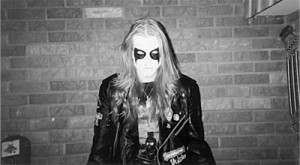
This film is clearly a chance for those involved to speak about such things after the initial media attention and exposure had long ago infected the exclusivist purity of Norwegian Black Metal. As such, it is not really a film about Black Metal. No clear picture is put together as to be able to explain what Black Metal is, although larger conclusions can be drawn as streams of dialogue intersect and are placed alongside appropriate imagery and Nordic scenery. The anti-Judeo-Christian sentiments of church burnings and the anti-consumerist, anti-westernisation implications of Helvete’s radical ideology are explored with reasonable depth, but there is nothing much said about what they affirmed and found beauty in, which is the real impulse behind many classic Black Metal albums. Combined with what seemed to be the ultimate fate of these artists as some form of social ostracisation and self-destruction (captured by Satyricon’s Frost and his throat-slitting public art display, and Dead’s suicide), Black Metal – whatever it is – comes off as a dark curiosity ultimately yielding fatalistic results. Fair enough, that’s not the purpose of the movie, but for a Black Metal initiate, this film offers little more than surplus interview material. It’s interesting as a documentary, exploring the detrimental effects of media bullshit super-imposed on an ideological and artistic movement that stood well outside of what the media can express in it’s limited lexicon, and provides content for those interested to further research this cryptic genre.
– Written by ObscuraHessian
Tags: Black Metal, burzum, darkthrone, documentary, film, mayhem, review, until the light takes us, varg vikernes, zine-video

